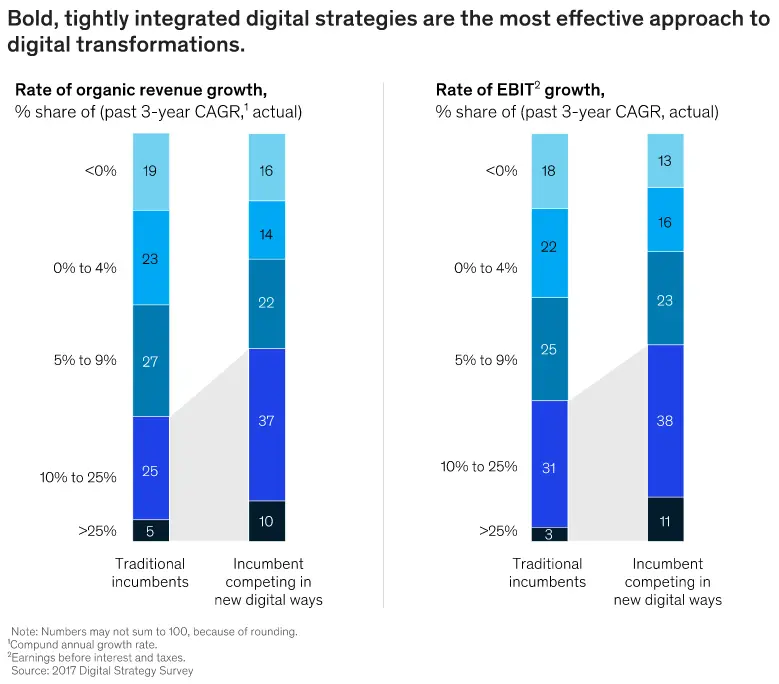

Blog updated October 2025 to improve relevance.
The world has changed again. The pace of change keeps rising, and the space to sit back and plan is gone. Every month brings a new technology, a new regulation, or a new competitor that moves faster than the last.
What used to be strengths – size, structure, stability – can now slow you down. Legacy systems and fixed ways of working make it harder to adapt when the market shifts.
Three-year transformation plans no longer work. By the time they’re approved, the world has already moved on. What’s needed today is momentum – and a way to keep it going without burning everyone out.
Some firms cope by reacting to each new issue as it comes. Others take a more organised approach, building agility into how they think and work. The difference shows in results.
Recent research from Gartner shows that digital experience is now viewed by most companies as a critical competitive factor, yet many struggle with maturity.
Meanwhile, analysis from McKinsey and others still notes that a large share of digital transformation investments miss their desired impact.
So why do some succeed where others stall? Often, it comes down to whether change starts from the inside or the outside.
Inside-out transformation starts with internal priorities. The business looks at what’s not working, where the gaps are, and which tools might help.
It’s a logical place to begin – upgrade the systems, clean up the data, train the people. It can bring useful efficiencies.
But focusing too much on the internal side can make change feel disconnected from customers. You fix your own problems, but not theirs.
Outside-in transformation starts the other way round. You begin with what customers, users or partners need – and then shape your business to meet those needs.
These firms listen for signals: where customers struggle, what they expect next, and which technology might help.
They link those insights to internal action. That could mean new products, new delivery models, or new roles.
Think about how Stripe reworked payments around developer workflows, or how Klarna shifted the experience of buying to be far more seamless.

Many organisations stay inside-out because it feels safer. They know their systems and teams. But that mindset carries real risks.
Success now depends on faster learning and clearer purpose. Digital tools help, but only when culture and leadership make space for testing and change.
As Harvard Business Review once put it:
“There’s no single technology that delivers transformation. The shift happens when leaders change how they think and work.”
COVID is no longer the key driver of digital change. Other pressures have taken its place.
Climate events, global tensions and trade limits have exposed weak supply chains. Firms are building systems with greater visibility, flexibility and faster response.
See also: World Economic Forum on supply chain resilience.
Artificial intelligence has moved to centre stage. Privacy, ethics and accountability now top many board agendas. Digital leaders design for compliance from day one.
Learn more: UK ICO guidance on AI and data protection.
Big tech and large ecosystems have tightened their grip. Businesses now must decide whether to integrate, compete or carve their own space.
Related reading: Forrester – Platform strategy trends 2025.
Customers expect smooth, personalised experiences powered by AI and data. Anything less feels clunky. Transformation without that focus rarely stands out.
See: PwC – Experience is everything.
Digital efforts are no longer just about efficiency. They now carry environmental and social goals as central requirements.
Read more: BCG – The green digital transformation.
After years of heavy investments, boards demand clear returns. That means shorter paybacks, smaller releases, and continuous measurement.
See: Deloitte – Measuring ROI in digital transformation.
Transformation has matured. It’s no longer about catching up. It’s about making the right moves, quickly and responsibly.
If you’re setting transformation in motion today, these principles help keep you grounded:
The question isn’t whether to transform. It’s how to make each step count.
If you’d like to talk about how to apply an outside-in approach in your business, get in touch.

